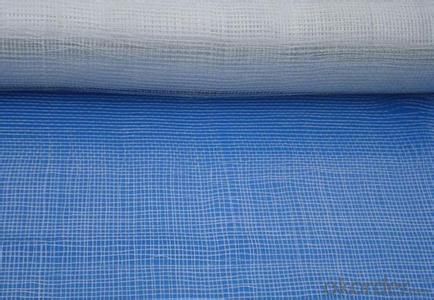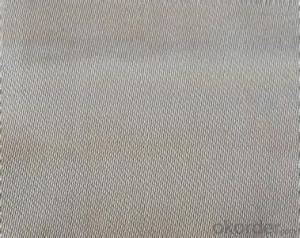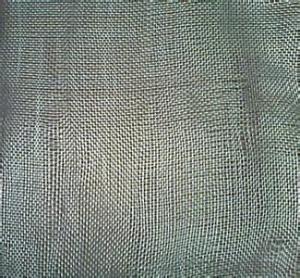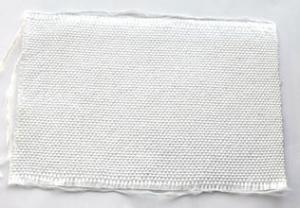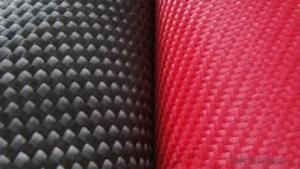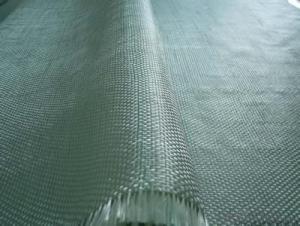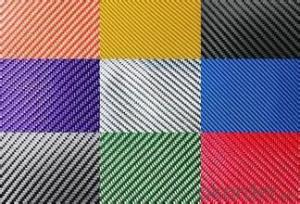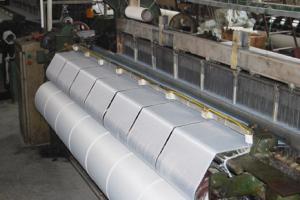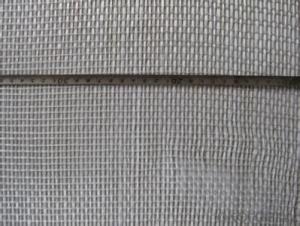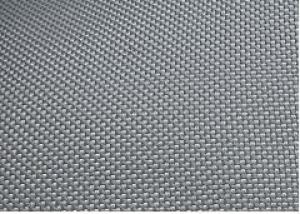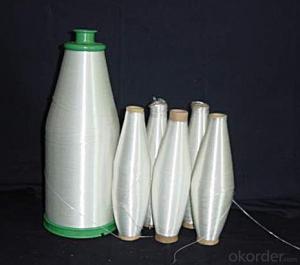High Silica Fiberglass Fabrics Cloth Fabric
- Loading Port:
- China Main Port
- Payment Terms:
- TT OR LC
- Min Order Qty:
- -
- Supply Capability:
- -
OKorder Service Pledge
Quality Product, Order Online Tracking, Timely Delivery
OKorder Financial Service
Credit Rating, Credit Services, Credit Purchasing
You Might Also Like
Quick Details
| Place of Origin: | Brand Name: | Model Number: | |||
| Application: | Weight: | Surface Treatment: | |||
| Width: | Weave Type: | Yarn Type: | |||
| Alkali Content: | Standing Temperature: |
Packaging & Delivery
| Packaging Detail: | 50m/carton |
| Delivery Detail: | about 20days |
Specifications
1. High silica glass fiber cloth.
2. High temperature resistance.
3. Instant working temp.: 1400C degree
- Q: What are the environmental impacts of using fiberglass fabric?
- The utilization of fiberglass fabric can result in various environmental consequences. Initially, the extraction of raw materials, such as silica sand, for the production of fiberglass fabric can have detrimental effects on the environment. This extraction process can disturb local ecosystems, contribute to deforestation, and release harmful pollutants into the air and water. In addition, the fabrication of fiberglass fabric necessitates a significant amount of energy, often obtained from non-renewable sources. This energy consumption contributes to the emission of greenhouse gases, exacerbating climate change. Furthermore, the production process may also generate toxic byproducts, such as formaldehyde and volatile organic compounds, which, if not managed properly, can have adverse effects on human health and the environment. Another environmental concern associated with fiberglass fabric pertains to its disposal at the end of its life cycle. Fiberglass is not biodegradable and can persist in the environment for an extended period. Improper disposal, such as sending it to landfills, can lead to the release of microplastics into the soil and water, posing a threat to wildlife and ecosystems. Furthermore, fiberglass fabric is frequently coated with resins or chemicals to enhance its performance and durability. These coatings may contain harmful substances, such as heavy metals or flame retardants, which can leach into the environment during use or disposal, potentially contaminating soil, water, and air. In conclusion, the utilization of fiberglass fabric has wide-ranging environmental impacts, including habitat destruction, energy consumption, greenhouse gas emissions, the generation of toxic byproducts, inadequate end-of-life disposal, and contamination risks. It is crucial to consider these impacts and explore alternative materials or manufacturing processes that are more sustainable and environmentally friendly.
- Q: Can fiberglass fabric be used for air ducts?
- Yes, fiberglass fabric can be used for air ducts. Fiberglass fabric is a popular choice for air duct insulation due to its excellent thermal and acoustic insulation properties. It is lightweight, flexible, and resistant to fire, moisture, and mold growth, making it suitable for use in air duct systems. Additionally, fiberglass fabric is easy to install and can help improve energy efficiency by reducing heat loss or gain through the ductwork. However, it is important to ensure that the fiberglass fabric used for air ducts meets the necessary industry standards and regulations to ensure proper performance and safety.
- Q: Is fiberglass fabric suitable for high-stress applications?
- Fiberglass fabric is not typically suitable for high-stress applications. While fiberglass is known for its strength and durability, it may not be able to withstand the intense pressures and loads associated with high-stress environments. Fiberglass fabric is often used in applications that require moderate strength and resistance to heat, chemicals, and electricity. However, for high-stress applications where materials need to withstand extreme forces and pressure, alternative materials such as carbon fiber or Kevlar are more commonly used. These materials offer higher tensile strength and better impact resistance, making them better suited for high-stress applications in industries such as aerospace, automotive, and construction.
- Q: Can fiberglass fabric be used for electrical cables?
- No, fiberglass fabric cannot be used for electrical cables.
- Q: How much resin does 1 square meter 02 fiberglass cloth need to consume?
- Should be less than 200 grams of resin, depending on your craft and glass cloth varieties, hand paste process in general
- Q: What are the different laminating options available for fiberglass fabric?
- There are several different laminating options available for fiberglass fabric, depending on the desired application and performance requirements. One common option is the use of epoxy resin as a laminating material. Epoxy resin is known for its excellent adhesion to fiberglass fabric, providing a strong and durable bond. It offers good resistance to water, chemicals, and UV radiation, making it suitable for a wide range of applications such as boat building, surfboards, and aerospace components. Another option is polyester resin, which is less expensive than epoxy resin but still provides a strong bond with fiberglass fabric. Polyester resin is commonly used in applications where high strength and impact resistance are required, such as automotive parts and industrial equipment. Vinyl ester resin is another laminating option for fiberglass fabric. It offers a balance between the cost-effectiveness of polyester resin and the performance of epoxy resin. Vinyl ester resin is known for its superior resistance to chemicals, making it suitable for applications in corrosive environments such as chemical storage tanks and pipes. Additionally, some manufacturers offer pre-preg laminating options for fiberglass fabric. Pre-preg refers to a fabric that is already impregnated with resin, allowing for easier and more controlled lamination. Pre-preg laminates are commonly used in the aerospace industry, where precise and consistent lamination is crucial. In summary, the different laminating options available for fiberglass fabric include epoxy resin, polyester resin, vinyl ester resin, and pre-preg laminates. The choice of laminating material depends on factors such as the desired application, performance requirements, and cost considerations.
- Q: Is fiberglass fabric resistant to fire?
- Yes, fiberglass fabric is resistant to fire. Fiberglass is made from fine fibers of glass that are woven into a fabric. The glass fibers have a high melting point, which means they do not easily catch fire or burn. Additionally, fiberglass fabric is often treated with fire-resistant coatings or chemicals to enhance its fire resistance properties. This makes it an excellent choice for applications where fire resistance is required, such as protective clothing, insulation materials, and fireproof curtains. However, it is important to note that while fiberglass fabric is resistant to fire, it is not completely fireproof and can still melt or degrade under extreme heat conditions.
- Q: Can fiberglass fabric be used for reinforcement in chemical storage tanks?
- Yes, fiberglass fabric can be used for reinforcement in chemical storage tanks. Fiberglass is a strong and durable material that is resistant to many chemicals, making it suitable for use in environments where chemical storage tanks are present. The fabric can be applied to the tank structure to provide additional strength and support, helping to prevent leakage or damage. Additionally, fiberglass is lightweight and easy to work with, making it a practical choice for tank reinforcement. However, it is important to select the appropriate type of fiberglass fabric that is specifically designed for chemical resistance to ensure its effectiveness in this application.
- Q: Can fiberglass fabric be used for airbags?
- Yes, fiberglass fabric can be used for airbags. Fiberglass fabric is known for its high strength and heat resistance, which makes it suitable for applications that require durability and safety. Airbags, being a crucial safety component in vehicles, need to withstand high impact forces and rapid inflation. Fiberglass fabric provides the necessary strength and resistance to handle these conditions effectively. Additionally, fiberglass fabric is lightweight, flexible, and can be easily molded into different shapes, making it an ideal material for airbags. Overall, fiberglass fabric is a reliable and commonly used material for airbags due to its excellent strength-to-weight ratio and ability to withstand extreme conditions.
- Q: Can fiberglass fabric be used for upholstery?
- Fiberglass fabric is indeed a viable option for upholstery purposes. This versatile material boasts numerous advantages when used in upholstery. Its durability and ability to withstand wear and tear make it suitable for high-traffic areas. Moreover, fiberglass fabric's resistance to stains, mildew, and fading has contributed to its popularity for outdoor furniture upholstery. Additionally, it provides excellent support and structure to cushions and upholstery foam, ensuring both longevity and comfort. However, it is worth mentioning that fiberglass fabric may not offer the same level of softness or comfort as other materials such as cotton or polyester. Therefore, its utilization should be determined based on the specific requirements and preferences of the project at hand.
Send your message to us
High Silica Fiberglass Fabrics Cloth Fabric
- Loading Port:
- China Main Port
- Payment Terms:
- TT OR LC
- Min Order Qty:
- -
- Supply Capability:
- -
OKorder Service Pledge
Quality Product, Order Online Tracking, Timely Delivery
OKorder Financial Service
Credit Rating, Credit Services, Credit Purchasing
Similar products
Hot products
Hot Searches
Related keywords

